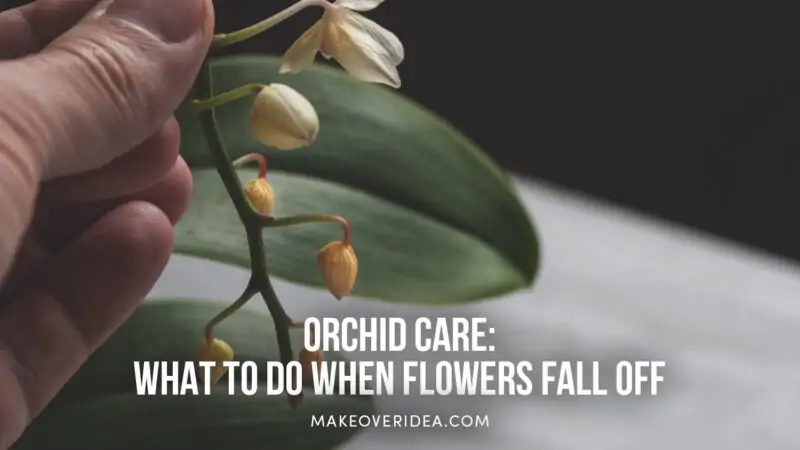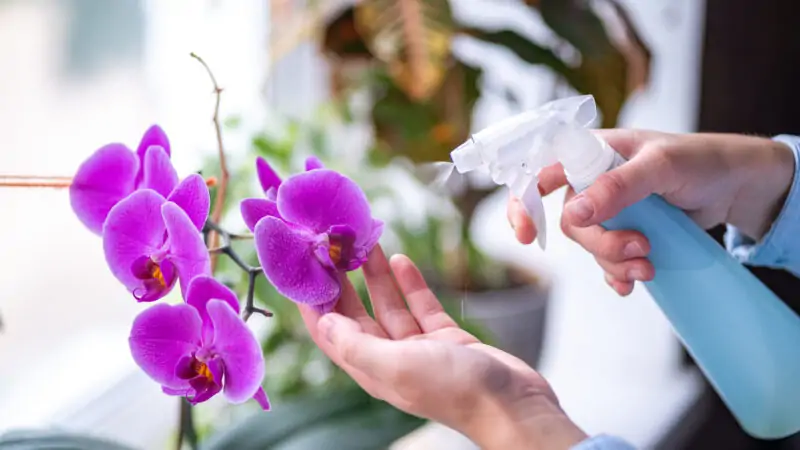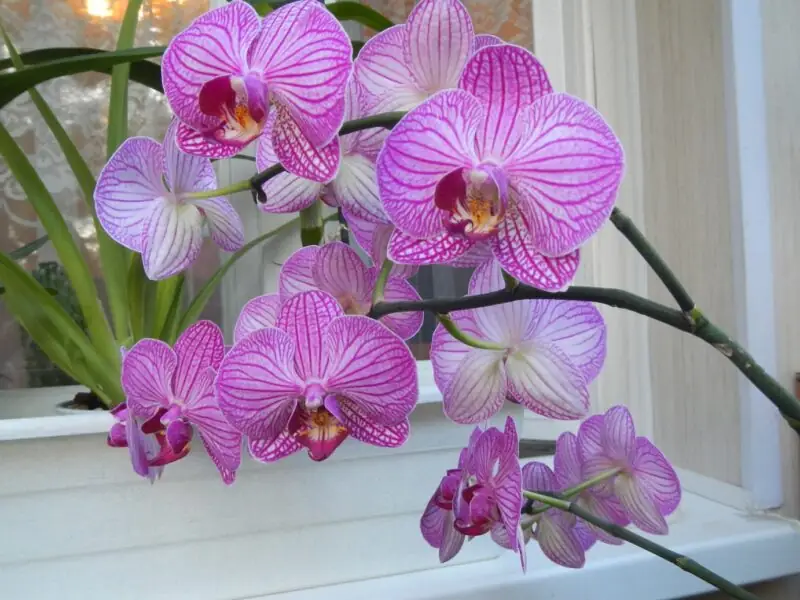What to Do When Orchid Flowers Fall Off: Detailed Guide

Orchids are known for their stunning beauty and elegance, but what to do when orchid flowers fall off can be a mystery for many gardeners. In this article, we’ll explore the reasons behind falling petals, the lifecycle of orchids, and how to take care of your orchid after the flowers have fallen to ensure a healthy, beautiful plant.
Orchid Plant Lifecycle
Understanding the lifecycle of this plant is crucial for proper care and knowing what to do when orchid petals fall off. These exotic plants go through various stages, including growth, blooming, and dormancy, with each stage requiring specific attention and care.
What Causes Petals to Drop Off?
After they have finished their natural cycle, the petals of this plant naturally fall off. This is a typical process and does not always mean your plant is not healthy. The term when you can enjoy your plant in its full glory can range from a few days to several months, according to the American Orchid Society, depending on the species and environmental conditions (1). Flowers will gradually wilt and fall off as they get older, leaving place for new growth.
Premature petal drop can be brought on by a number of things, including as excessive or insufficient watering, strong temperature swings, and a lack of light. Under-watering can cause the plant to get stressed and lose its blossoms, while overwatering can result in root rot. The plant can be shocked by sudden temperature changes, and insufficient light can lead to weak, undeveloped flowers that drop off more quickly.
Orchid Bloom and Bud Fluctuations
Orchid bloom and bud fluctuations can also be a factor in falling flowers. Some varieties of this plant, like the popular Phalaenopsis (moth orchid), experience a rest period after flowering, during which the plant focuses on producing new leaves, roots, and sometimes a new flower spike. This rest period is normal and necessary for the plant to gather energy for the next reproductive cycle.
Post-Flowering Care

Proper care after the petals fall off is essential for maintaining a healthy orchid and promoting episodes of developing beautiful flowers.
As Flowers Fell Off, How to Care for Orchids
Examine the flower spike after the blossoms have fallen off (the stem that holds the flowers). You can trim it just above a node (the small bumps) if it’s healthy and green. This can promote the growth of a secondary spike and more blooms. It is advisable to trim the spike back to the plant’s base if it has turned brown.
Repot if required: Now is an excellent time to determine whether your plant needs to be put in another flowerpot. Depending on the growth rate and potting mix conditions, orchids typically need to be replanted every one to three years. Replanting is necessary if the roots have outgrown the container or the potting soil has degraded.
Increase watering: After all the petals have fallen off, your plant can need less water. Make sure to allow the potting soil to partially dry out in between episodes of watering to prevent root rot.
Fertilize: Continue treating your plant with a balanced orchid fertilizer to promote healthy growth and development.
Do Orchid Flowers Reappear After Falling Off?
Don’t worry if your plant decided to drop its flowers — it’s not the sign that your orchid is dying! With the right care, your beautiful plant can produce new flowers and rebloom again. It may take a few months, but with patience and attention, your orchid may even grow a new flower spike and produce even more blooms. Keep in mind that different types of orchids may have different reblooming timelines, so be sure to research your specific plant and provide it with the appropriate environmental conditions.
Orchid Care Techniques
Proper care techniques can make all the difference in the health and vitality of your plant. By understanding what exactly your orchids prefer and providing the best care, you can enjoy beautiful, long-lasting blooms.
How to Prevent Dropping Orchid Flowers
To stop the early orchid flowers dropping:
- Water your plants consistently; inconsistent watering might lead to blossom wilting. Never allow your plant lie in standing water and let the potting mix somewhat dry between waterings.
- Maintain consistent temperature and humidity levels because orchids are sensitive to high temperature swings and low humidity levels. Keep the atmosphere steady to prevent flowers from falling.
- Provide appropriate lighting: To encourage robust blooms, place your orchid in bright, indirect light. While too little light might result in sluggish growth and poor blooming, direct sunshine can harm plants.
How to Fertilize and Replant Your Orchid
Replanting and feeding are crucial parts of orchid maintenance:
- Fertilizing: Employ a balanced, water-soluble fertilizer made especially for orchids: it contains all the nutrients they need. Provide an additional portion of nutrients every two weeks when the plant is actively growing and once a month when it is resting. To prevent the fertilizer from scorching the roots, dilute it by half.
- Repotting: Replant your orchid every one to two years or when the potting soil becomes compacted and breaks down. Trim any damaged or dead roots, then carefully remove the orchid from its pot and set it in a new flowerpot with brand-new potting soil. After putting your beauties in another flowerpot, properly water them.
Phalaenopsis Orchid Care
This variety is very popular popular and relatively easy to care for. Understanding their specific needs will help you keep it healthy and beautiful.
What to Do with a Phalaenopsis Orchid After the Flowers Fall Off
- Trim the flower spike: If the spike is green, trim it to encourage a secondary spike. If it’s brown, cut it back to the base.
- Adjust care routine: Reduce watering frequency and continue to add nutrients regularly to promote new growth.
- Be patient: This variety can take several months to rebloom. Focus on providing optimal care during this time.

How to Encourage New Blooms on Your Phalaenopsis Orchid
- Provide proper lighting: This variety needs bright, indirect light. Place your orchid next to a window with filtered sunlight but not in direct sun.
- Maintain temperature: Aim for daytime temperatures of 70-80°F (21-27°C) and nighttime temperatures of 65-70°F (18-21°C) to support healthy growth and development.
- Encourage a rest period: After petals fall off, orchids don’t need much water: reduce watering frequency and add nutrients regularly. This rest period allows the plant to gather energy to produce more blooms in the future.
FAQs
In this section, we’ll answer some frequently asked questions about what to do when your see the petals on your beautiful plant falling off, helping you better understand the process and provide the best care for your beauty.
Most often, it’s usually a natural part of the plant’s lifecycle, as the active period comes to an end. The plant can now focus on vegetative growth, producing new leaves and roots to store energy for future development.
Here are the steps you need to follow:
Trim the flower spike: If the spike is green, cut just above a node to encourage a secondary spike. If it’s brown or yellow, cut it back to the base.
Adjust care routine: Water your orchid less frequently and continue to add nutrients regularly to promote new growth and reblooming.
Be patient: It may take several months for your beauty to rebloom, so focus on providing optimal care during this time.
The answer to this question lies in ensuring that you’re providing the right care:
Check the roots: Inspect the roots for signs of rot or damage. Trim away any unhealthy roots and repot the orchid in fresh soil if needed.
Provide proper lighting: Make sure your plant is receiving bright, indirect light, but avoid direct sunlight — this kind of advise you’ll often hear from experienced gardeners.
Maintain temperature and humidity: Keep your plant in a stable environment with appropriate temperature and humidity levels to support growth and reblooming.
Conclusion
Understanding what to do when orchid flowers fall off is essential for maintaining the health and beauty of your plant. By following proper care techniques and adjusting your routine , you can encourage new growth and enjoy your orchid’s reblooming for years to come. Remember, patience is key, as it may take some time for your plant to rebloom. With consistent care, you’ll be rewarded with vibrant, long-lasting flowers.